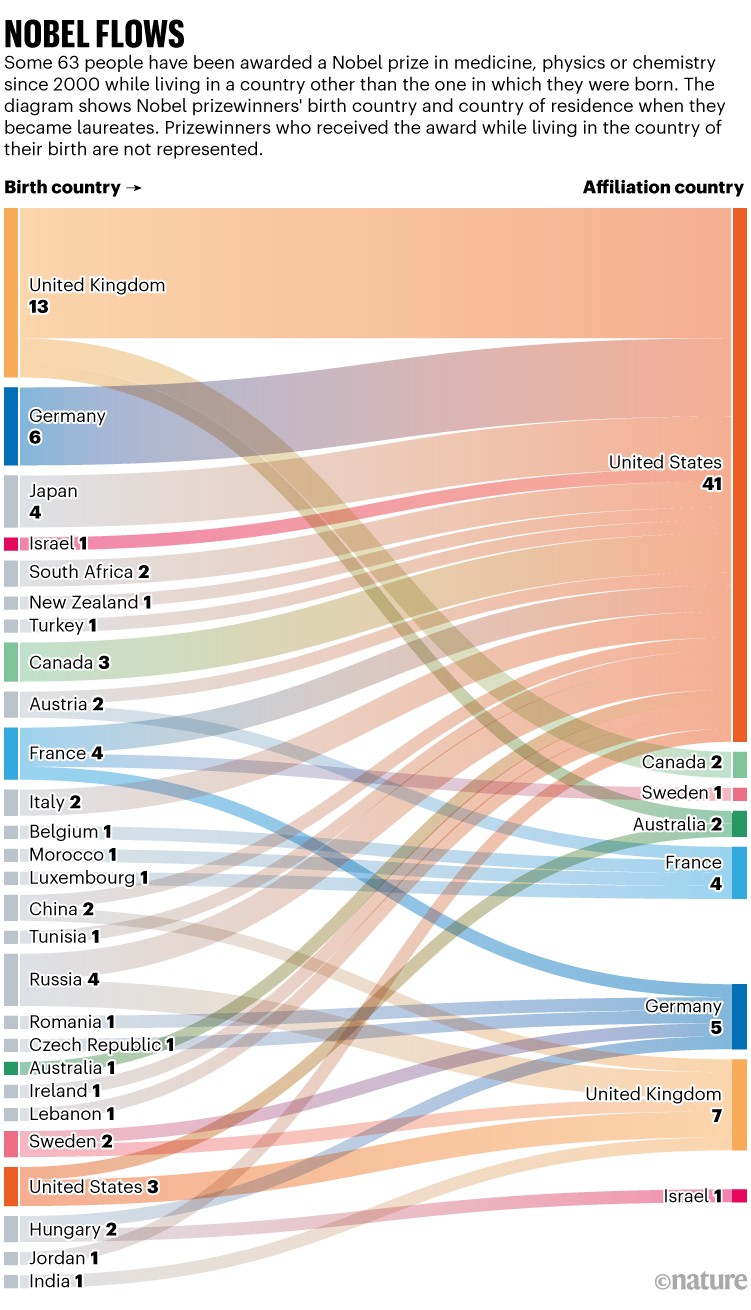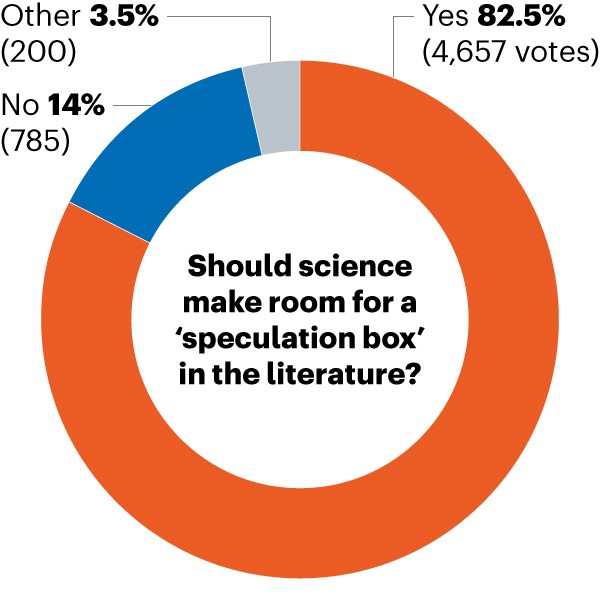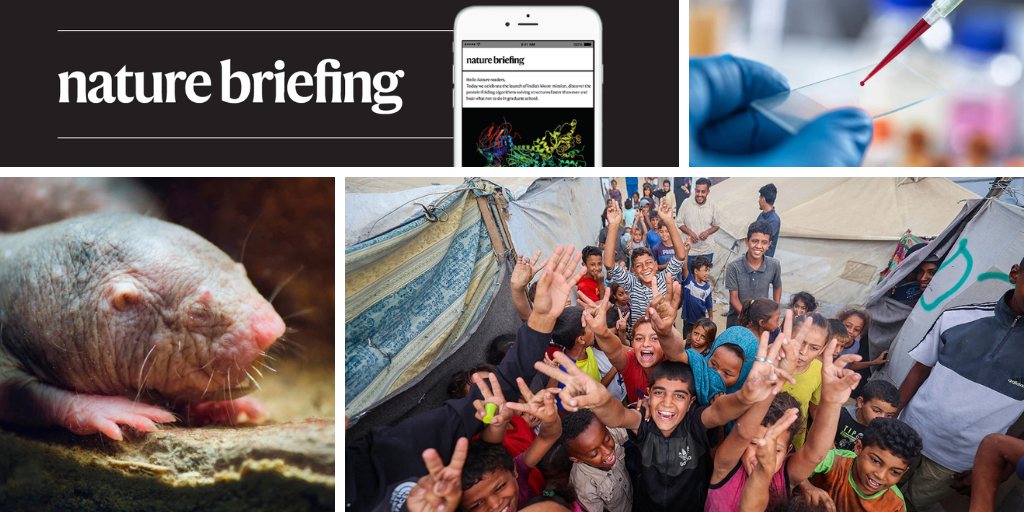You have full access to this article via your institution.
Hello Nature readers, would you like to get this Briefing in your inbox free every day? Sign up here.

Palestinian children celebrate at a camp for displaced people in Nuseirat in the central Gaza Strip.Credit: Eyad Baba/AFP via Getty
As the first phase of a ceasefire in Gaza comes into effect, researchers who study post-war reconstruction say that rebuilding efforts must not shut out Palestinian expertise. Academics at scientific institutions “possess unparalleled local knowledge and a deep understanding of their land”, says Amani Al-Mqadma, head of international relations for the Islamic University of Gaza, and a co-author of a report assessing the needs of higher education in the territory.
Reference: Resilience in the rubble report
Four minor tweaks to an enzyme could be what helps naked mole rats (Heterocephalus glaber) live for nearly 30 years — an unusually long lifespan for an animal of their size. Researchers have found that an enzyme called cGAS in the animals differs from the version in humans by four amino acids. These swaps prevent the enzyme from breaking down as quickly as it does in humans, which enhances the animals’ ability to repair genetic damage that leads to ageing.
A new blood test could be a step toward a diagnostic tool for myalgic encephalomyelitis/chronic fatigue syndrome (ME/CFS), a poorly-understood condition characterized by extreme tiredness. The researchers who developed the test say that it can distinguish epigenetic changes in the cells of people who have the condition with 96% accuracy. Others in the field have welcomed the findings, but caution that the study only included 47 people with ME/CFS and there’s still a long way to go before such a test can be used in the clinic.
Reference: Journal of Translational Medicine paper
Nobel prizes
Of the 202 laureates who have been awarded Nobel prizes in physics, chemistry and medicine this century, around 30% were born elsewhere than the country in which they were awarded their prize. The United States has benefited from the most Nobels this way: for example, one of this year’s chemistry winners, Omar Yaghi — the first Jordanian-born Nobel laureate in science — moved to the United States as a teenager. “Mobility benefits everyone. Each newcomer brings fresh ideas, new techniques and different ways of looking at old problems,” says Russian-born physics winner Andre Geim, who is now based in the United Kingdom. “Countries that welcome this mixing stay sharp.”

Source: nobelprize.org
Question of the week

Last week, readers considered a letter by digital geographer Milad Malekzadeh that suggested a new addition to the standard research paper: a speculation box to contain your “bold ideas, daring interpretations and creative theories” (with “a clear disclaimer [that] would signal that this is speculation — not evidence”). Overall, Briefing readers were in favour of the idea: 83% answered ‘bring on the box’ in our poll. Many also said they were fans of the idea, but would prefer to see it in an appendix or even a separate publication.
Others took the time to point out some possible downsides. “My concern with adding a speculation box to the scientific literature is that AI might not be able to distinguish speculation from fact,” writes veterinary epidemiologist Edie Marshall, who notes that artificial intelligence systems are already hoovering up preprints, as well as revised or withdrawn papers.
The box could also lead laypeople astray. “In this age where wild, unsupported speculation is often taken as truth, I would be concerned that scientific speculations become sound-bites,” writes palaeogeographer Chris Schneider. And petrologist Zoltan Vaci says that the last thing scientists need is another part of the publishing process. “Enough with these ‘innovations’ that just make more work for us — we are already overworked.”
Features & opinion
A woman on a rescue mission begins to forget herself in The girl who used to be my sister and a woman yearns for real, human connection in Future solitude.
Nature | 5 min read & Nature | 6 min read
Working women are represented in online imagery as much younger than they are in the actual workforce, feeding a bias — in AI systems and the real world — that women have fewer skills and less experience than men, especially in occupations with higher status and earnings. These images create “a self-fulfilling prophecy”, computational social scientist and study co-author Douglas Guilbeault tells the Nature Podcast. “If the stereotypes are sort of what we think the world should be like, then we interact with the internet and we start to increasingly believe that our idea of what the world should look like is actually what the world looks like.”
Nature Podcast | 36 min listen
Subscribe to the Nature Podcast on Apple Podcasts, Spotify or YouTube Music, or use the RSS feed.
Today Leif Penguinson is exploring the Tamerza Oasis, the largest mountain oasis in Tunisia. Can you find the penguin?
The answer will be in Monday’s e-mail, all thanks to Briefing photo editor and penguin wrangler Tom Houghton.
This newsletter is always evolving — tell us what you think! Please send your feedback to [email protected].
Thanks for reading,
Flora Graham, senior editor, Nature Briefing
With contributions by Jacob Smith
• Nature Briefing: Careers — insights, advice and award-winning journalism to help you optimize your working life
• Nature Briefing: Microbiology — the most abundant living entities on our planet — microorganisms — and the role they play in health, the environment and food systems
• Nature Briefing: Anthropocene — climate change, biodiversity, sustainability and geoengineering
• Nature Briefing: AI & Robotics — 100% written by humans, of course
• Nature Briefing: Cancer — a weekly newsletter written with cancer researchers in mind
• Nature Briefing: Translational Research — covers biotechnology, drug discovery and pharma


